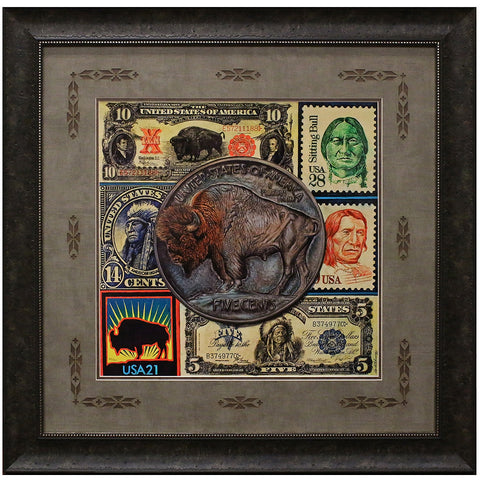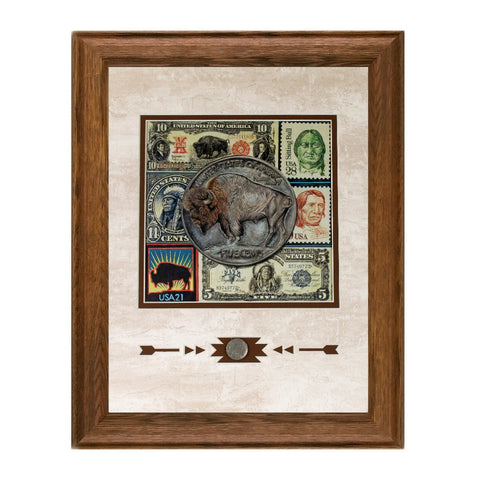
Bisontennial
An image of a majestic buffalo roaming the open plans is perhaps one of Americas last enduring treasures. They have been immortalized on US currency, US stamps, state flags, state seals and countless logos and trademarks. But their fame came literally at a cost as they barely survived through the last 200 years.
Long ago the buffalo's migratory paths took them from the eastern seaboard to Oregon and California; from Great Slave Lake in northern Alberta Canada to regions in north Mexico. It staggers the imagination that at one time they numbered upwards of 70 million. To put this in perspective, naturalist and zoologist, William Hornaday, was aptly quoted as saying, "It would have been as easy to count or estimate the number of leaves in a forest as to calculate the number of buffaloes living at any given time during the history of the species previous to 1870." As an effort to "civilize" and assimilate the American Indian into the European idea of manifest destiny, the U.S. Government led a systematic extermination of the buffalo. They believed that the nomadic way of life of the buffalo and the Indian had to be severely subdued. A massive slaughter of the buffalo ensured and so did forced reservations. This crippled the spirit of the American Indian because to them the buffalo was their ultimate provision, every part used for their daily living and even intricately woven into their spiritual life.
These haunting decades rolled on and by 1893 there were only approximately 300 buffalos left. In the face of almost certain extinction, the American Bison Society was established in1905 by William Hornaday and Theodore Roosevelt. With the help of Roosevelt persuading congress to establish wildlife preserves and with the assistance of several private buffalo owners the American Bison Society was able to stock these new appointed parks and preserves. His effort proved effective and their numbers increased yearly. Today the National Bison Association estimates that there are approximately 150,000 buffalo in public and private herds in the United States.
Never again will we ever witness an unending sea of bison charging the earth or the ground with the thunder, but we can make every effort to protect them and pass their legacy to the next generation.
*Featured in "Bisontennial" is the famous buffalo nickel created by sculptor James Earl Fraser; the 1901 $10 legal tender "Bison Note"; the 1899 $5 "Indian Chief Note" Silver Certificate; the 1923 US Postal 14 cent "American Indian" stamp; the 1989 US Postal 28 cent "Sitting Bull stamp; the 1987 US Postal 10 cent "Red Cloud" stamp; and the 2001 US Postal 21 cent "Buffalo" stamp.





